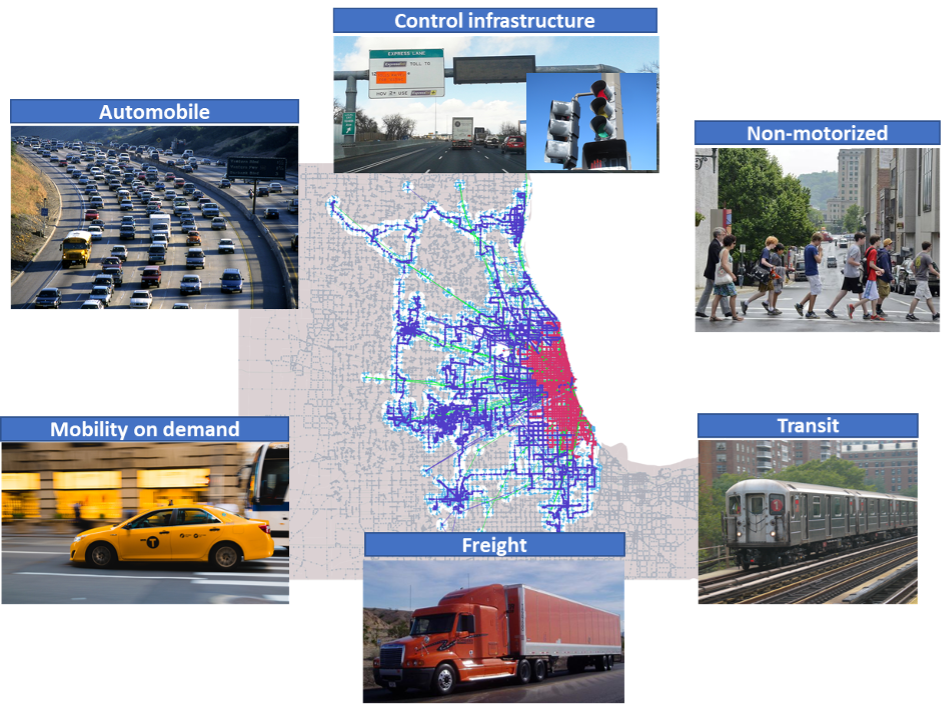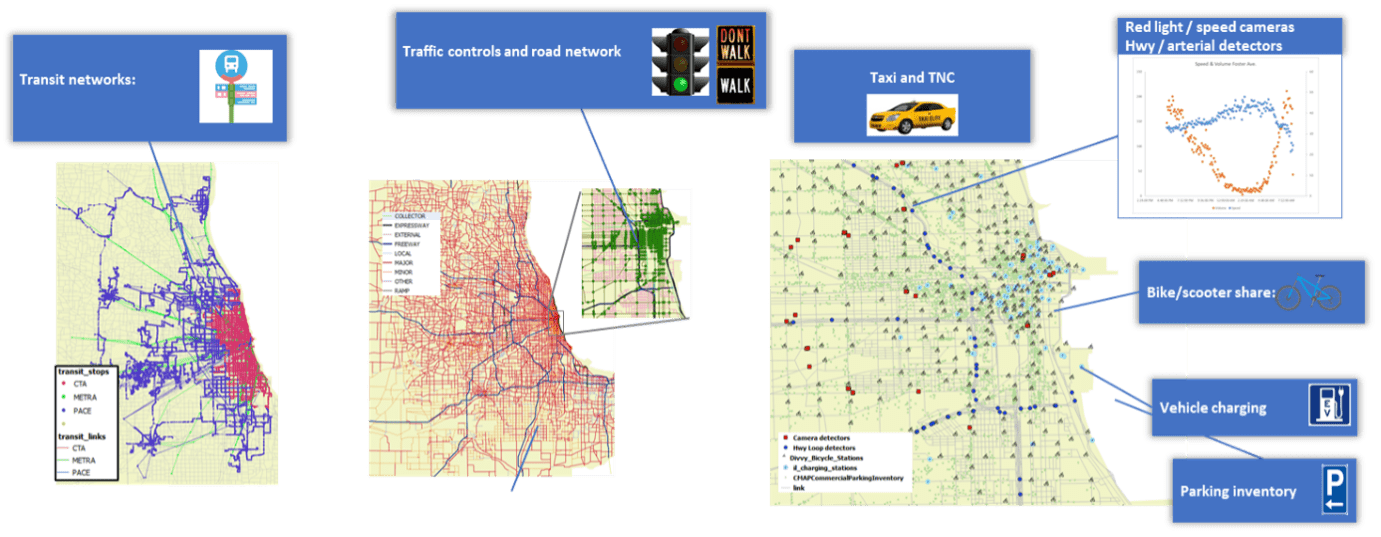Transportation Supply Modeling
Simulate trips and their outcomes at the transportation system level with POLARIS.
Travel demand in POLARIS, a high-fidelity predictive transportation system model, arises from a series of individual behaviors relating to generating, planning, and scheduling both routine and day-to-day activity engagement and travel (see diagram below). The interaction of the travel demand model, which generates the activity engagement (LINK), with the transportation supply model simulates the trips in the network and their outcomes. From the results, the network performance characteristics are processed to create the metrics of interest when analyzing new technologies.
 Figure 1. Transportation supply
Figure 1. Transportation supply
Developed by the Argonne National Laboratory Vehicle & Mobility Systems Group (VMS), POLARIS’s multi-modal transportation networks include:
- Roadway links by facility type (e.g., expressway, arterial, collector, local, etc.);
- Walkway links for non-motorized modes and connectivity to other modes;
- Transit stops, routes, patterns, and other factors by mode (e.g., bus, subway, rail, etc.);
- Traffic management infrastructure, including signals, signs, sensors, and communications; and
- Parking infrastructure.
Movements and operations of multiple transportation service providers in POLARIS include:
- Transit schedules and capacitated individual vehicle movements;
- Fleet vehicles for mobility service providers (e.g., ride-share, bike share, car share, e-scooters, etc.); and
- Fleet operations for mobility providers (e.g., repositioning, rebalancing, ride-matching, etc.)
 Figure 2. Transportation supply data elements in POLARIS.
Figure 2. Transportation supply data elements in POLARIS.
Discover key features of traffic flow and transportation simulation in POLARIS, including:
- Cutting-edge agent-based implementation of mesoscopic traffic flow based on the Lighthill-Whitham-Richards (LWR) model, including node model for flows at signalized and unsignalized turn movements;
- Time-dependent intermodal A* (TDMI*) algorithm for agent-based shortest-path calculations, combined with a unique information-mixing model for fast dynamic traffic assignment convergence;
- Connectivity to optimization models for implementing fleet and infrastructure controls within the simulator;
- Fully multi-modal routing and travel simulation, allowing agents to switch between modes as needed for more realistic trip simulation; and
- Advanced vehicle technologies, such as cooperative-adaptive cruise control, platooning, and vehicle-to-infrastructure (V2I) connectivity, represented in mesoscopic simulation.